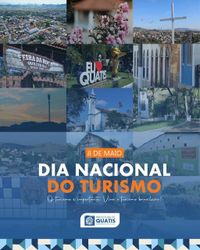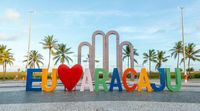On May 8, 2025, Brazil celebrates National Tourism Day amidst a remarkable resurgence in the tourism sector, marked by record-breaking statistics and a strong recovery trajectory. According to data from the Ministry of Tourism, the first quarter of 2025 witnessed over 23.7 million passengers boarding domestic flights, representing a 6% increase compared to the same period last year. This uptick is not just limited to domestic travel; international tourism has also seen a significant boost, with 3.7 million foreign visitors arriving in Brazil between January and March, which is almost a 50% increase from 2024.
These travelers contributed a staggering US$ 2.4 billion to the Brazilian economy, the highest amount recorded since 1970. Celso Sabino, the Minister of Tourism, attributes this growth to several factors, including a drop in unemployment, which stands at around 7%—the lowest level since 2012. “After all, nobody travels if they’re out of money!” Sabino remarked in an interview with the Agência de Notícias do Turismo.
The government’s initiatives to stimulate domestic tourism have also played a crucial role. The "Conheça o Brasil: Voando" program, which encourages domestic travel by offering more flights and discounts on hotel accommodations for specific groups like teachers and solo female travelers, has significantly increased the accessibility of travel within Brazil.
In February 2025, the tourism sector generated R$ 16.5 billion, the highest revenue ever recorded for that month, reflecting a growth of over 5% compared to the previous year. Furthermore, since 2023, Brazil has attracted US$ 617 million in foreign investments in the tourism sector, indicating a robust interest from international investors.
In terms of employment, the tourism sector has been a vital engine for job creation, generating 62,400 new formal jobs in the first quarter alone, bringing the total to 467,400 new jobs since the beginning of the recovery phase. Sabino highlighted the importance of government support in facilitating these developments, including significant investments in tourism infrastructure.
The Ministry of Tourism has completed nearly 500 infrastructure projects in the past year and currently holds around 1,900 active contracts with states and municipalities, totaling R$ 3 billion in resources. Sabino emphasized the importance of dialogue and collaboration with the private sector to enhance the tourism landscape in Brazil.
On the international front, Brazil has taken significant steps to bolster its global tourism presence. The country now presides over the Executive Council of UN Tourism and has inaugurated the first UN Tourism office in the Americas and the Caribbean, located in Rio de Janeiro. “We have the brand 'Visit South America,' which allows us to work on joint promotions with South American nations,” Sabino noted.
As the country prepares to host COP30, the government sees this as a pivotal opportunity to position Brazil as a global leader in sustainable tourism. “We are breaking all records and working tirelessly to establish Brazil as one of the world’s foremost destinations for sustainable and responsible tourism,” Sabino concluded.
In Quatis, a municipality in the Agulhas Negras region, the local government is also celebrating National Tourism Day by highlighting the area's natural beauty, historical heritage, and traditional events that attract visitors. The Prefeitura Municipal de Quatis has created a Tourist Catalog named "Conheça Quatis," showcasing key attractions in the city and encouraging exploration of its offerings.
Santos, another prominent tourist destination, is celebrating the day with pride. Thiago Papa, the Secretary of Tourism, Commerce, and Entrepreneurship, emphasized that Santos is increasingly recognized for its excellent tourism services. “Santos consolidates itself as a destination of excellence, offering a complete and unforgettable experience for all visitors,” he stated.
The city boasts stunning beaches, a rich historical heritage, and a vibrant cultural scene, complemented by a well-equipped infrastructure to welcome tourists. During the last summer, Santos recorded a historic influx of 3,344,442 visitors, the highest number since 2016, with hotel occupancy averaging 64% and peaking at 68% in February.
The 2024/2025 cruise season also saw significant activity, with 1.03 million passengers passing through the Terminal Marítimo Giusfredo Santini, generating an economic impact of R$ 1.5 billion. The city's attractions, including the Aquário Municipal and Museu Pelé, have drawn millions of visitors over the years, further solidifying Santos' reputation as a must-visit destination.
As part of its ongoing efforts to enhance tourism, Santos has launched new institutional videos on its social media channels to showcase the city’s natural beauty, creative economy, and cultural events. The city is also developing a new tourism portal with user-friendly navigation and personalized itineraries, aiming to improve the visitor experience.
Looking forward, the future of Brazilian tourism appears bright. With a focus on sustainability and inclusivity, the government is committed to promoting tourism that supports local communities and preserves the environment. “We are working tirelessly to ensure that tourism contributes to social justice, solidarity, and unrestricted inclusion,” Sabino reiterated.
As Brazil continues to break records and establish itself on the global tourism stage, the collective efforts of local governments, the private sector, and the federal government will play a crucial role in shaping the future of this vital industry.






